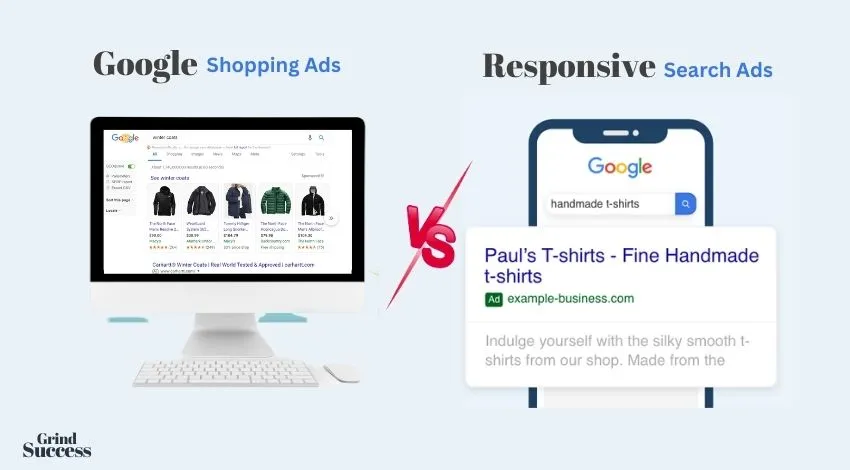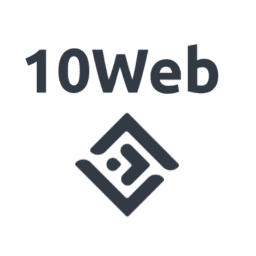Google Shopping Ads vs. Responsive Search Ads: Which One is Right for You?

In the ever-evolving world of digital marketing, businesses are constantly seeking ways to optimize their advertising efforts and achieve better results. Two popular options for online advertising are Google Shopping Ads and Responsive Search Ads.
In this article, we will provide a comprehensive comparison of these two advertising formats, discuss their unique features, and help you determine which one is best suited for your business needs.
Let’s dive in!
Table of Contents
Understanding Google Shopping Ads
Google Shopping Ads, also known as Product Listing Ads (PLAs), are image-based advertisements that showcase your products alongside relevant information such as price, title, and store name.
These ads are displayed on the Google Shopping tab, Google Search results, and even on Google partner websites.
What are Responsive Search Ads?
Responsive Search Ads (RSAs) are a type of Google Ads format that allows you to create multiple headlines and descriptions for your ad.
Google’s machine learning algorithm then automatically combines and tests various combinations of these assets to determine the best-performing version for each user.
Comparing Google Shopping Ads and Responsive Search Ads
Both formats can deliver impressive results when properly optimized. Google Shopping Ads tend to drive higher conversion rates due to their visual nature and targeted audience.
Responsive Search Ads, on the other hand, can achieve better click-through rates (CTRs) as they are more likely to match a user’s search query.
1. Targeting Options
With Google Shopping Ads, your targeting options are limited to product attributes such as category, brand, or product type. Responsive Search Ads offer more granular targeting options, including keywords, demographics, and interests.
2. Budget and Bidding
Both formats use cost-per-click (CPC) bidding, with Google Shopping Ads generally requiring a higher budget due to increased competition.
However, the potential return on investment (ROI) for Shopping Ads can be higher as they typically result in more conversions.
3. Suitability for Different Business Types
Google Shopping Ads are best suited for e-commerce businesses with visually appealing products, while Responsive Search Ads are more versatile and can be used by a wide range of businesses, including service-based companies and local businesses.
Ultimately, the choice between these two ad formats will depend on your specific goals and target audience.
Making the Right Choice for Your Business
To determine the best advertising format for your business, start by assessing your goals and objectives. If your primary focus is driving product sales for your e-commerce business, Google Shopping Ads may be the better choice.
However, if you are looking to increase brand awareness or promote a service, Responsive Search Ads could be the more suitable option.
1. Analyze Your Target Audience
Understanding your target audience is crucial for selecting the most effective ad format. Consider factors such as demographics, interests, and online behavior.
Aligning your advertising strategy with your audience’s preferences will help maximize the impact of your ads.
2. Evaluate Your Budget and Resources
Consider your budget and available resources when deciding on an ad format. Google Shopping Ads may require a higher budget and more time to set up, but they can deliver impressive ROI for e-commerce businesses.
Responsive Search Ads, on the other hand, maybe more cost-effective and easier to implement, making them suitable for businesses with limited resources.
3. Test and Optimize
Regardless of which ad format you choose, it’s essential to continuously test and optimize your campaigns. Analyze performance data, identify areas for improvement, and make necessary adjustments to ensure your ads are delivering the desired results.
In conclusion, both Google Shopping Ads and Responsive Search Ads offer unique advantages for businesses looking to improve their online advertising efforts.
To determine which format is right for your business, carefully consider your goals, target audience, budget, and resources. Remember that ongoing testing and optimization are crucial for achieving the best results.
If you’re looking for expert guidance in managing your Bing & Google Ads campaigns, consider partnering with Timwork PPC.
As Bing & Google Ads specialists, their team of professionals can help you make informed decisions, optimize your campaigns, and ultimately drive better results for your business.
This post was proofread by Grammarly. Try it – It’s Free!
Millions trust Grammarly’s free writing app to make their online writing clear and effective. Getting started is simple
Email, SMS, and more — Klaviyo brings your marketing all together, fueling growth without burning through time and resources.
Deliver more relevant email and text messages — powered by your data. Klaviyo helps you turn one-time buyers into repeat customers with all the power of an enterprise solution and none of the complexity.







![SEO Trends Taking Over Businesses in [2024] SEO Trends Taking Over Businesses in [2024]](https://grindsuccess.com/wp-content/uploads/2023/02/SEO-Trends.webp)